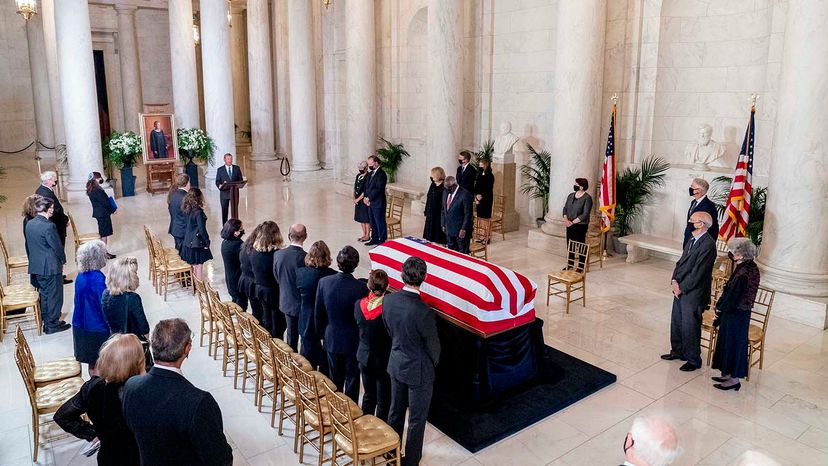The practice of lying in state began in the United States with Henry Clay, a Congressman and U.S. Secretary of State from Kentucky known as "The Great Compromiser." During much of Clay's life, the country was almost literally sectioned off, at odds over the question of slavery. Clay pushed through legislation to quell secession talk and to avoid civil war. (On his tombstone are these words: "I know no North — no South — no East — no West.") He died on June 29, 1852, and lay in state in the Capitol Rotunda on July 1, 1852.
Why was no one honored in this way before Clay? One reason: The Capitol wasn't completed until 1824.
Today, the honor is reserved for the nation's "most eminent citizens," according to the Architect of the Capitol, the agency charged with the stewardship of all the buildings and the 570 acres (231 hectares) of Capitol Hill grounds. According to custom and regulations, government officials — presidents, members of Congress and some military figures — lie "in state." The honor is not automatically extended to anyone except presidents and former presidents, and not everyone entitled to honor has it accepted by their survivors. Notable private citizens, too, sometimes get a rest in the Rotunda before burial, but they are said to lie "in honor." Coffins are placed in the Rotunda (the central part of the Capitol) under the Capitol Dome, often on a 2-foot-high (0.7-meters-high) catafalque made of pine, originally used to support the casket of Abraham Lincoln. The Lincoln catafalque is not used for those lying in honor.
Not all members of Congress who pass away, or all presidents, are afforded the honor of lying in state. The last Congressperson before Cummings and Lewis to lie in state was Senator John McCain, and he was only the 13th senator to do so. Before McCain it was Senator Daniel Inouye of Hawaii, who lay in state in 2012. Civil rights icon Rosa Parks is the first woman to lie in honor. Parks was a private citizen, not a government official, so she was considered to be "lying in honor" rather than "lying in state." She is still just one of only four civilians who have been bestowed this honor. That was in 2005.
Congress has to propose and approve of the honor, either by pushing through a resolution or simply by having leadership agree to it. (Most often, no resolution is needed.) Once Congress decides on the honor, a whole cadre of people are set loose to get the Rotunda — which is open to the public on most days — ready. From the Architect of the Capitol:
When the Architect of the Capitol (AOC) is notified that a ceremony will occur, our team begins fabricating a wooden catafalque, a stand to hold the casket. Ceremonial stanchions are cleaned and polished, the floors of the Rotunda are buffed and waxed, stone entrances to the U.S. Capitol Building are power washed, and lamps and other lighting is checked.
The evening before the ceremony, which is hosted by congressional leadership, the AOC installs ceremonial stanchions, chairs, podium and media risers. A viewing queue is established and staffed within the Capitol Visitor Center and tables with condolence books put in place. Electrical and sound requirements are met and tested – including microphones on the podium and event lighting.
Historically, the body has remained in the Rotunda for a period determined by Congressional leadership. Usually, it's a day or two.
